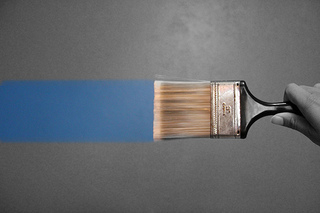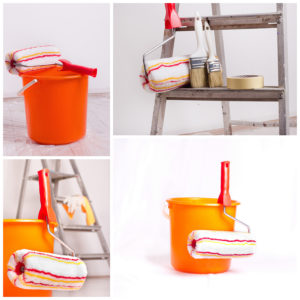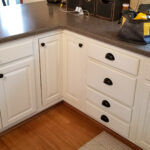What Causes a Wall to Look Uneven After Painting?
 Do-it-yourself painting can be a rewarding experience when everything goes as planned, but sometimes, things don’t turn out quite as expected. A common problem homeowners run into when painting their homes is an irregular-looking painted surface with inconsistent color, lines, streaks or splotches. These problems can be caused by a number of things including improper preparation, improper application, bad equipment and the paint itself.
Do-it-yourself painting can be a rewarding experience when everything goes as planned, but sometimes, things don’t turn out quite as expected. A common problem homeowners run into when painting their homes is an irregular-looking painted surface with inconsistent color, lines, streaks or splotches. These problems can be caused by a number of things including improper preparation, improper application, bad equipment and the paint itself.
Preparing the surfaces
Getting the walls and other surfaces ready to be painted is often a lengthier job than actually painting them. Here’s the easy way to understand surface prep: remove from the walls anything that can come between the wall material and the new paint. This includes stains, rust, peeling old paint, dust and grime. When a wall is properly prepared, you won’t have uneven, blotchy coverage when you paint it.
Professional painters will tell you that the most important tools in that big truck they drive are scrapers, sandpaper, spackling and cleaning solutions.
Type of paint
Not every paint is made to work well on every type of surface. Many coverage problems could have been prevented had the novice painter made sure that the paint he was buying was designed for the applications he was using it for.
You can buy paints designed for both interior and exterior applications as well as for specific wear, temperature and lighting issues. If you’re not a professional painter, then the best person you can have on your team is an experienced paint dealer. Don’t be afraid to ask questions and let this person know exactly what you’ll be painting. He or she can then supply you with the right stuff.
The tools of the trade

Next to scraping, sanding and cleaning equipment, a painter’s key tools are those that will be used to put the paint on the surfaces. This means rollers and brushes. Many a paint job was ruined because the homeowner chose to use some old brushes left over in the garage from a previous project or rollers that should have been thrown away years ago.
It pays to use good equipment, and you should invest in the best rollers and brushes available. But remember: not every type of brush and roller is ideal for every type of paint project. Rollers come in lamb’s wool, synthetic material, foam and other materials. Brushes are made with natural, nylon, polyester, foam bristles and more. It’s important to get the right kinds of tools for your specific job.
Other things to consider:
- Do you need a primer?
- How many coats of paint are necessary?
- What is the ideal air temperature for applying your paint?
- Should you mix several gallons of paint together, or paint can-by-can?
- How long does your specific paint need to dry before applying a second coat?
By following these guidelines and getting answers to your questions, you stand a far better chance of doing a great job in whatever painting project you’re undertaking. If you want to hand your job over to professionals who know these “tricks of the trade” and a whole lot more, Franklin Painting of Connecticut is standing by. Give us a call at (877) 646-7774 and tell us what you have in mind. We’re here to help.








